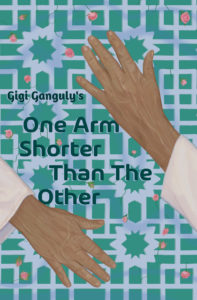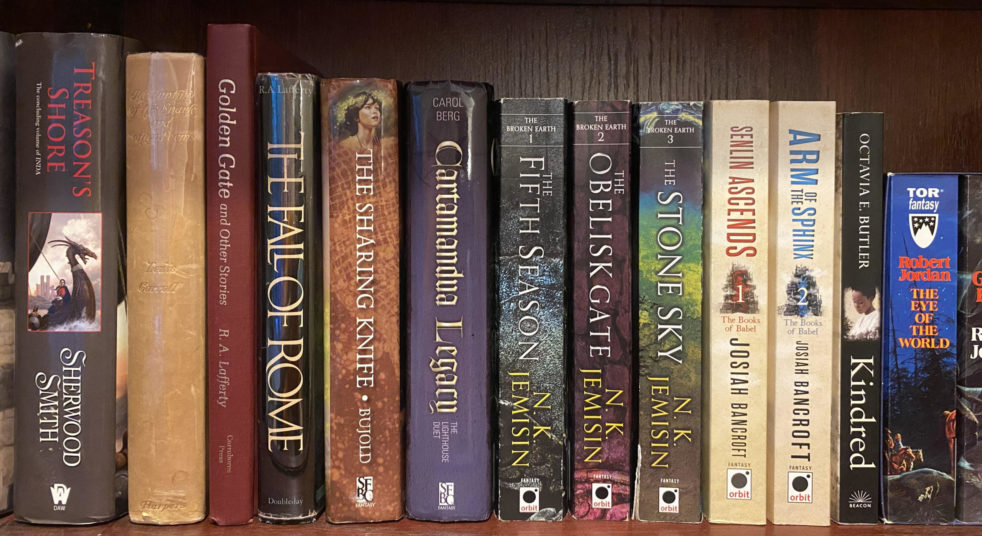
This review is based on an eARC (Advance Reading Copy) provided by the publisher via NetGalley in exchange for an honest review. One Arm Shorter Than The Other was released April 5, 2022.
Gigi Ganguly’s indie debut novella One Arm Shorter Than The Other may be the most off-the-beaten-track book I’ve read in years—at least if you adjust for the fact that I judge a self-published sci-fi competition and have pretty well beaten the self-published track. But I had a friend get an ARC and bring it to my attention as a novella with an unusual structure. And while I may not have as much patience for novel-length experiments, I’m always up for trying short works with unusual structures. So I thought I’d give it a go.
The structure of One Arm Shorter Than The Other is a cousin of the “several short stories in a frame narrative,” but it’s not quite the same. The prologue is sparse and cryptic, and apart from introducing the Delhi repair shop that would play a role in the three following short stories, doesn’t do much in the way of framing. But the second half of the novella features a novelette that recalls the prologue and provides an origin story for the shop and its proprietor, an aging Delhi man with one arm shorter than the other.
Though they ultimately get more background in the novelette that closes the story, the three short stories in the first half work perfectly well as standalone pieces of magical realism. Three people—a grandfather mourning lost loved ones, an actor struggling to find work that he does not consider beneath him, and a recently retired schoolteacher with a weakness for novels—bring broken pieces of electronics to the shop for repair, and three people return with devices that are something more than they bargained for. Each story is engaging and deeply human, with the unexplained magic serving only to sharpen the focus on personal longing at their core. Fans of character-driven short fiction will have plenty to love, with all three prioritizing character over plot or premise, and the first even drifting near slice-of-life territory.
The explanation that comes in the form of the closing novelette is unnecessary for enjoyment of the opening three tales, and I actually may prefer them left unexplained. Which is not to say that the final novelette is a poor piece—it continues the character focus, exploring questions of identity and legacy while providing backstory to the repair shop visited in its three predecessors. But it does dilute some of the character work in trying to provide intricacy to the plot, and I’m not convinced the gains were worth the cost. Of course, other readers prefer every detail tied neatly together and may find exactly what they wanted in the closing novelette. But I find there are times when it’s better to let mystery linger than to pull back the curtain to reveal anything short of stunning.
Ultimately, though I didn’t end up loving the structure, the storytelling and character work were still enough to recommend One Arm Shorter Than The Other. Fans of magical realism and character-driven short fiction have plenty of reason to read, and those who seek explanation have the payoff they’re looking for.
Recommended if you like: magical realism, slice-of-life, character-driven short fiction.
Can I use it for Bingo? It’s hard mode for Published in 2022, Standalone, and Family Matters, and it also fits BIPOC Author and Wibbly Wobbly Timey Wimey.
Overall rating: 15 of Tar Vol’s 20. Four stars on Goodreads.
